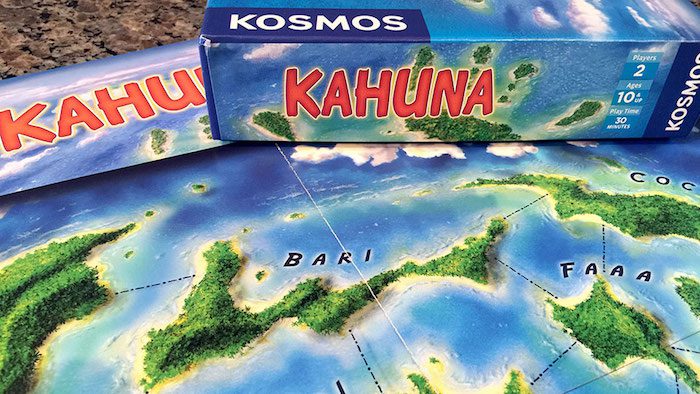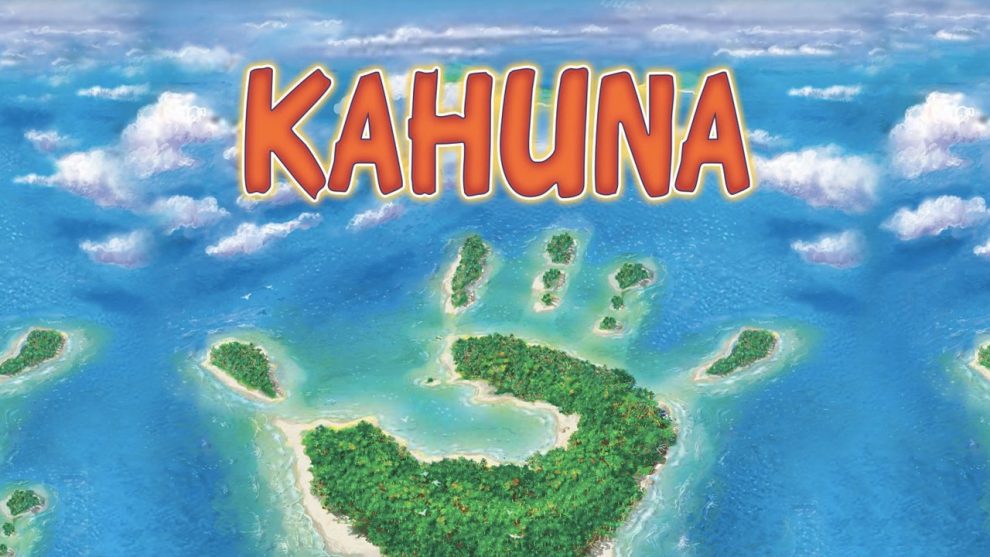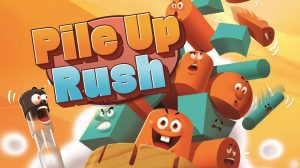Kahuna Overview
Kahuna is an area control game with a Polynesian theme that takes place over 3 rounds. Set in an archipelago consisting of 12 islands, you’re fighting to control a larger number of islands than your opponent. Each island is inter-connected with the others with between 3 to 6 bridges per island. Players win control of an island by owning the majority of its bridges. Gaining majority over an island causes all your opponents bridges on that island to be destroyed.
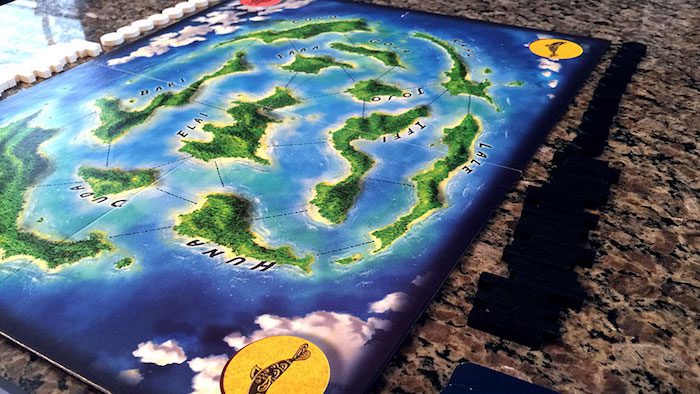
How to Setup Kahuna
To begin the game, each player is dealt 3 cards (up to a hand limit of 5). An additional 3 cards are laid face up on the table and the remaining cards will form a draw pile.
How to Play Kahuna
On their turn each player will play as many cards as they like, with each card illustrating a single island in the chain. They will place a bridge token connecting that island to another. Bridges can also be destroyed by playing 2 cards from the same island, or 2 cards connecting the bridge they wish to destroy. The player then draws one of the face up card, or a card from the top of the pile to indicate their turn is complete.
At the end of round 1, the player with the most islands receives 1 point. At the end of round 2, the player with the most islands receives 2 points. Finally, at the end of round 3, the player with the most islands subtracts the opposing player’s island count from theirs and adds that number to their total. The player with the highest score wins.

What I Like About Kahuna
Let’s talk about quality first. The box is sturdy, brightly colored and gorgeous with the nice compact square box many Kosmos 2p games are known for. The insert holds everything snugly and firmly. Each player receives a set of durable wooden pieces in either black or white (25 bridge tokens and 10 majority tokens). The pieces are durable and should stand up to many gameplays. There are 24 total cards, with a nice matte finish and are thick without being hard to shuffle. Finally, the board is heavy duty and just the right size to be laid onto a table between two people.
The rules are well laid out with plenty of full color illustrations to cover all of the questions you might have. The cards have icons in each corner to match icons on the board. This assists in orienting the cards to make locating the islands easier. Furthermore, the island whose card you hold will be highlighted in red.
Gameplay is tight, and quite competitive; this is no 2 player solitaire game. At some point in the game you’ll be getting your hands dirty; directly attacking your opponent by taking cards you know they need, or by destroying one of their bridges leading to a collapse of their lead, or a strengthening of your own lead.
What I Dislike About Kahuna
If you’re dealt cards which are all close together on the board, then it’s much easier to lock up 1, 2, or even 3 islands within your first few turns. It’s not a sure win, but it definitely makes it easier to score the first point. By implementing the unique scoring mechanism it does make it harder to win the overall game though.
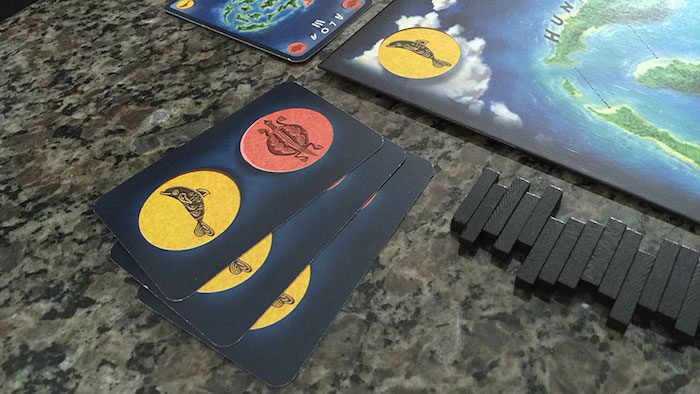
Final Thoughts on Kahuna
Kahuna is simply one of my favorite games. It’s quite tactical as capturing a single island can cause cascading effects due to the destruction of your opponents bridges. You have to think more in terms of a spider web of connections rather than in linear progressions. It’s quite common to be significantly behind, but take the lead in just a turn or two. There are just enough choices to avoid chance, but few enough to avoid analysis paralysis. If you like 2p games then you should have definitely have Kahuna in your collection.
